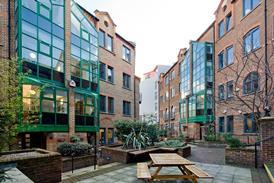By Mia Hunt
Office rents in Dublin on the rise
Strong occupier demand and a lack of supply have pushed up the city’s rents – and they look set to rise further still.
Dublin continued to see significant rental growth in 2016 driven by strong occupier demand and a lack of supply, according to the latest figures from Savills. Headline rents for prime offices grew from €57.50/sq ft to €60/sq ft (£49.50/sq ft to £52/sq ft), while top rents for secondary space ranged from €22/sq ft to €27.50/sq ft.
Letting activity remained strong too. While below the record high of 2015 when 283,932 sq m (3m sq ft) of deals occurred, it was still well above the long-term average, at 224,834 sq m.
The three largest lettings in 2016 – all pre-lets – were Amazon’s move into the Vertium building; accountant Grant Thornton’s letting at City Quay; and the National Treasury Management Agency’s decision to take space at Dublin Landings.
The overall vacancy rate in Dublin has declined rapidly and currently stands at 9.02%. The most sought-after areas of Dublin such as the Central Business District (CBD) and the Docklands have the lowest rates, at 4.84% and 2.65% respectively.
Controlled pace of supply
“The vacant office space is mostly inferior-quality space not sought by tenants and often deliberately held vacant pending refurbishment, redevelopment or sale,” says Cunningham. “Supply is responding to demand but at a controlled pace. There is potential for acceleration if pre-letting volumes increase, especially among multi-phase schemes in the Docklands in particular.”
There are currently 37 buildings on site totalling 362,321 sq m, mostly in the CBD where 32 buildings are under construction. Already, 43% – 157,000 sq m – is pre-committed to tenants or owner-occupiers.
“This level of development activity is needed, given that from 2010 to 2014 there was little or no office development in the city,” says Cunningham.
However, lack of finance for speculative developments is still an issue.
“We have observed a decline in excess of 52% in the possible volume of office space for delivery in 2018, when measured against the same tally in September 2015,” says Cunningham. “As a result, there is little chance of us reaching a point of oversupply in the near future. Indeed, over 70% of stock that will be delivered in H1 2017 is now committed.”























